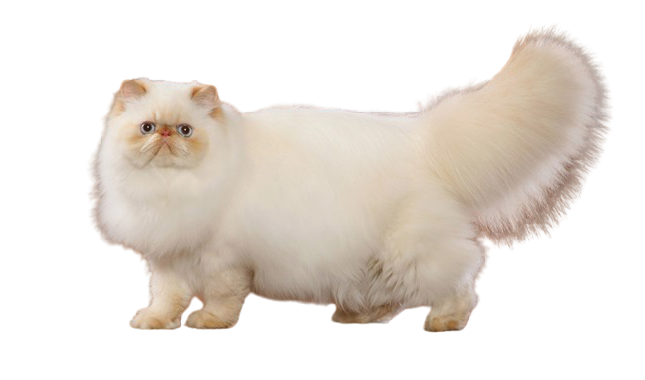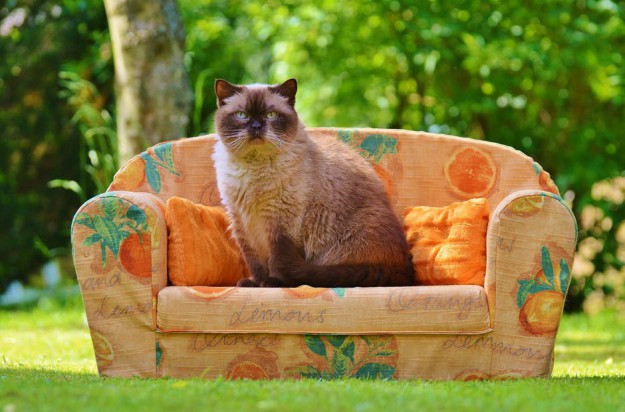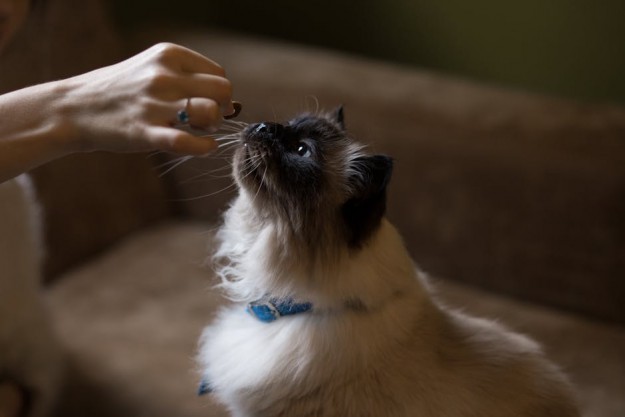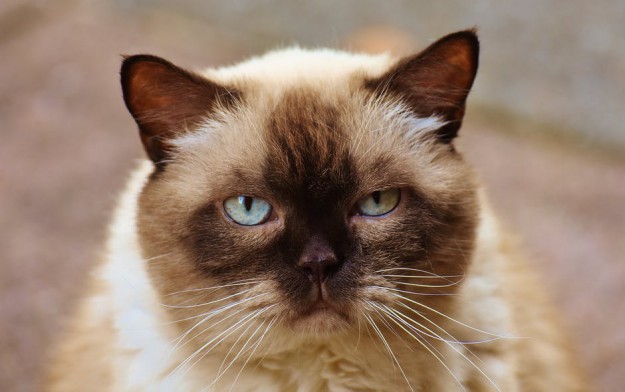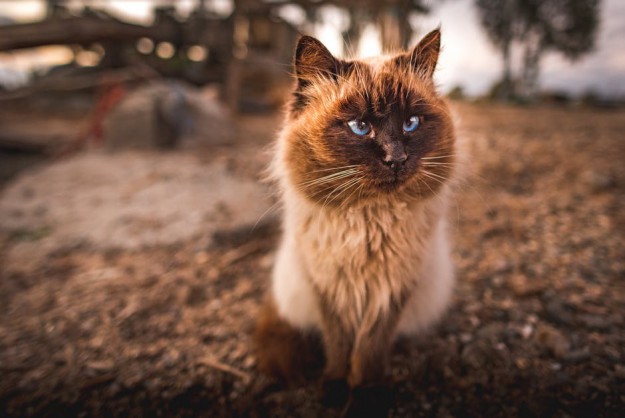Breed Information
| Popularity/Rank | N/A |
|---|---|
| Name | Himalayan |
| Other names | Himalayan Persian, Colourpoint Persian, Longhaired Colourpoint, Himmy |
| Origin | United States |
| Origin | United Kingdom |
| Size | Medium |
| Coat | Brushy, Soft, Undercoat, Long |
| Lap Cat | Yes |
| Lifespan | 9 to 15 years |
| Temperament |
Gentle, Intelligent, Quiet, Social, Dependent 1. Gentle: The Himalayan cat is a gentle and loving breed that makes a great companion for families with children and other pets. They are known for their affectionate nature and their ability to get along well with other animals. 2. Intelligent: The Himalayan cat is an intelligent breed that is easy to train. They are known for their quick minds and their ability to learn new tricks easily. 3. Quiet: The Himalayan cat is a quiet breed that does not meow or yowl excessively. They are known for their calm demeanors and their ability to stay quiet when necessary. 4. Social: The Himalayan cat is a social breed that loves to be around people and other animals. They are known for their outgoing personalities and their love of attention. 5. Dependent: The Himalayan cat is a dependent breed that requires regular grooming and care from its owner. They are known for their high maintenance needs and their need for constant companionship. |
| Weight | Female: 7 - 11 pounds, Male: 9 - 14 pounds |
| Colors | Blue, Chocolate, Cream tortie, Fawn, Lilac, Red, Seal, White |
| Kitten Prices |
USD $1000 - $2500
Himalayan kittens are some of the most beautiful and exotic cats in the world. They are also one of the most expensive, with prices ranging from $1000 to $2500. So what factors affect Himalayan kitten prices? The first factor is the breeder. Some breeders are more reputable than others and charge more for their kittens. The second factor is the parents of the kitten. If the parents are show quality or come from a long line of champions, they will be more expensive. The third factor is the quality of the kitten itself. A well-bred Himalayan kitten with no health problems will be more expensive than a poorly bred one with health issues. So is it worth it to pay more for a Himalayan kitten? That depends on what you're looking for. If you want a beautiful, healthy cat that will be a loving companion, then yes, it's worth it to pay more for a high-quality Himalayan kitten. |
Breed Characteristics
| Adaptability | |
|---|---|
| Affection Level | |
| Child Friendly | |
| Dog Friendly | |
| Energy Level | |
| Grooming | |
| Health Issues |
Respiratory problems, Digestive problems, Eye problems, Kidney problems Is Himalayan cat Hypoallergenic? Himalayan cats are not hypoallergenic, but they are less likely to trigger allergies in people who are sensitive to cats. Himalayan cats have long, thick fur that traps allergens, and they produce less of the protein that causes allergies. 1. Respiratory problems The Himalayan cat breed is prone to respiratory problems due to its short nose and flat face. This can lead to difficulty breathing, and in some cases, respiratory infections. If your Himalayan cat is having difficulty breathing, it is important to take them to the vet for an examination. 2. Digestive problems The Himalayan cat breed is also prone to digestive problems. This is due to their short intestines, which can make it difficult for them to digest food properly. If your Himalayan cat is having digestive problems, it is important to take them to the vet for an examination. 3. Eye problems The Himalayan cat breed is also prone to eye problems. This is due to their flat faces, which can cause their eyes to become irritated and infected. If your Himalayan cat is having eye problems, it is important to take them to the vet for an examination. 4. Kidney problems The Himalayan cat breed is also prone to kidney problems. This is due to their short intestines, which can make it difficult for them to properly absorb nutrients. If your Himalayan cat is having kidney problems, it is important to take them to the vet for an examination. |
| Intelligence | |
| Shedding | |
| Social Needs | |
| Stranger Friendly | |
| Vocalization | |
| Health Care |
Himalayan cats are a special breed of cat that originates from the Himalayan mountains. As such, they are adapted to cold weather and have a thick coat of fur that helps protect them from the elements. However, this thick coat of fur also means that they are more prone to hairballs and other health problems associated with long-haired cats.
To keep your Himalayan cat healthy, it is important to brush their fur regularly to help prevent hairballs and other health problems. You should also keep their nails trimmed and their litter box clean. In addition, Himalayan cats are prone to certain health problems such as respiratory infections and kidney disease, so it is important to take them to the vet for regular checkups. |
History
The Himalayan cat is a beautiful, long-haired breed that is closely related to the Persian. The Himalayan has many of the same characteristics as the Persian, but with one key difference – the Himalayan has point coloration, meaning that the tips of its fur are a darker color than the rest of its coat. This gives the Himalayan a very striking appearance, and it is one of the most popular cat breeds in the world.
The Himalayan breed almost became extinct in the early 20th century. This was due to a number of factors, including World War I and II, which led to a decrease in the number of cats being bred. In addition, many of the early Himalayan cats were crossbred with other breeds, which diluted the purity of the breed. However, thanks to dedicated breeders, the Himalayan was revived and is now once again one of the most popular cat breeds in the world.
The ancestry of the Himalayan cat can be traced back to Persia and Turkey. The first recorded mention of a long-haired blue-eyed cat comes from Persia in 1684. These cats were then brought to Europe, where they quickly became popular among royalty and nobility. In 1871, Queen Victoria acquired a long-haired blue-eyed cat from Persia, which she named “Himalaya” after her favorite mountain range. It is believed that this cat was instrumental in establishing the Himalayan breed.
The Himalayan was officially recognized as a distinct breed by The International Cat Association (TICA) in 1979. Since then, it has become one of the most popular cat breeds in both North America and Europe. Thanks to its beautiful appearance and loving personality, there is no doubt that the Himalayan will continue to be one of the world’s most beloved cat breeds for many years to come.
Description
The Himalayan cat is a beautiful, long-haired breed that is known for its striking blue eyes and unique coloring. Although they are often mistaken for Persians, Himalayans are actually a separate breed. They are gentle, loving cats that make great companions. Here is everything you need to know about Himalayan cats, including their appearance, personality, and health.
Appearance:
Himalayan cats are medium to large in size with long, thick fur. They have a round head with large ears, and their bodies are compact and muscular. The most distinctive feature of Himalayans is their blue eyes. Their coat can be any color or pattern, but it must have points (darker fur on the face, ears, legs, and tail) in order to be considered a true Himalayan.
Lifespan:
Himalayan cats typically live 12-16 years.
Size:
Adult Himalayan cats weigh 8-12 pounds. Females are typically smaller than males.
Colors:
Himalayan cats can be any color or pattern, but they must have points (darker fur on the face, ears, legs, and tail) in order to be considered a true Himalayan. The most common colors are seal point (dark brown), blue point (grayish-blue), lilac point (pale gray), chocolate point (medium brown), and red point (orange).
Personality:
Himalayan cats are gentle giants who love nothing more than cuddling with their favorite humans. They are very affectionate and loyal cats who bond closely with their owners. Although they enjoy being around people, they do not like being picked up or held for long periods of time – they much prefer sitting next to you on the couch or sleeping in your bed! Himalayans tend to be relatively quiet cats who only vocalize when they want something (like food!).
Friendliness:
Himalayans get along well with other animals and children if they are raised together from a young age. However, because of their shy nature around strangers, it is best to introduce them slowly to new people and animals outside of the family home. With patience and socialization training , most Himalayans will warm up to new faces eventually!
Temperament:
Himalayan cats have a reputation for being calm and laid-back – although this isn’t always the case! Some individual Himalayans can be quite active and playful , especially when they’re young kittens . In general , however , most Himalayans prefer relaxing activities like napping , grooming , and watching birds at the window .
Health :
Himalayan cats are generally healthy , but there are some health conditions that this breed is prone to developing . These include polycystic kidney disease , respiratory problems , eye problems , heart disease , hip dysplasia , diabetes mellitus ,and obesity . Be sure to work with a reputable breeder who can provide health clearances for both parents of your kitten . And always take your Himalayan cat to the vet regularly for checkups !
Adaptability :
Himalayan cats do best in calm households where there isn’t too much commotion . They do not like loud noises or sudden changes in routine – so if you have a chaotic household or travel frequently , a Himalayan may not be the right pet for you . That said , as long as you provide them with plenty of love , attention ,and care – including regular grooming sessions to keep their long fur looking beautiful – your Himalayan cat will be content living indoors with you !



